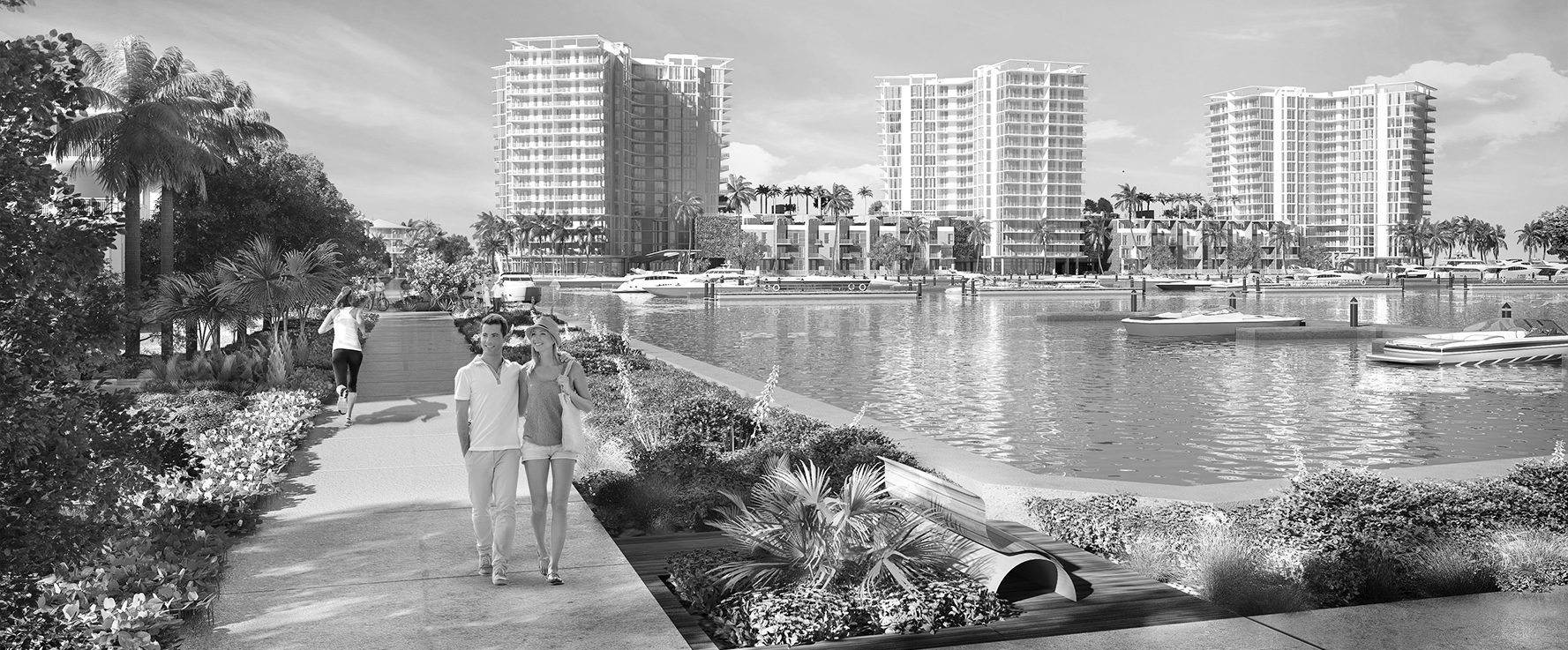Walkability Taking Tampa To Next Level
Marina Pointe is among the new highly walkable communities along waterfronts in Tampa, Fla.
Back in the 1970s, between years of grad school, I rode the rails around the country on an Amtrak railpass. When the pass and my cash expired, I found myself in Tampa. I got a room at the fleabag Hotel Floridan and landed a server job at a 24-hour restaurant near the University of Tampa.
For fun on days off, I’d hoof all the way from downtown out to WestShore Plaza to hang at the mall for a couple hours. Except for an occasional drunk lurching from a tavern around Kennedy Blvd. and, say, Himes Ave., I was the only one along the entire route even thinking about walking.
What a difference 42 years makes.
Pedestrian friendly
Today, from Water Street Tampa all the way out to BTI Partners’ Westshore Marina District, walkable enclaves are transforming Tampa’s landscape. That’s turning an historically auto-centric metro into one where folks can enjoy ambling, often along water. It’s helped make Tampa one of the nation’s top 25 most walkable cities, according to Walkscore.com.
“Tampa’s waterfront was long forgotten, and far more industrial than pedestrian,” says Noah Breakstone, managing partner of Florida’s West Coast for BTI Partners.
“That’s beginning to change as the area’s residential real estate landscape evolves and mixed-use walkable developments gain popularity, including Westshore Marina District and Vinik’s Water Street. Tampa is a sprawled city, so these small walkable communities are becoming like the mini urban cores of growing neighborhoods. They are becoming the heart that brings life to long-time neglected communities.”
Tampa residents’ ability to leave vehicles and get from one of those mini urban cores to others will be enhanced if the city is able to borrow from the example of Orlando’s SunRail commuter rail system. Proponents hope a similar model could run on CSX CSX rail lines along a 10-mile stretch from downtown to the University of South Florida.
Close together
Housing density aids walkable communities, which in turn attract renters and buyers who like the idea of living, working and playing without being chained to a vehicle. So it’s no shock Westshore Marina District, a 52-acre master-planned mixed-use waterfront community, will feature 1,400 new apartments and condos along with 70,000 square feet of retail, nor that 55-acre Water Street Tampa in the city’s historic downtown area will include 3,500 residential units along with one million square feet of retail space.
Westshore Marina District is home to Marina Pointe, which overlooks one of the largest and most impressive yacht basins on Tampa Bay. Marina Pointe is now under construction by BTI Partners. Its first tower will include 113 upscale condominiums and seven townhomes with inspiring visual perspectives on Tampa Bay and St. Petersburg’s skyline. The condos will bear price tags ranging from the $700,000s to more than $2 million.
“For the most part, BTI Partners is catering to buyers in the Tampa market looking to upgrade their quality of life,” Breakstone says. “Marina Pointe provides a unique luxury waterfront lifestyle with direct access to boating services, boutique shopping and dining and high-end retail. A smaller portion of the buyers are coming from California, New York and from outside the country.”
Growing sophistication
That Tampa’s real estate market is on the radar of international buyers is testament to the city’s increasing sophistication. Among Sunshine State burgs, Miami was always regarded as a place of luxurious lifestyles, Orlando as the East Coast capital of U.S. entertainment. Tampa, by contrast, remained an amorphous place that seemingly defied definition.
“The area is attracting starchitects like Marina Pointe’s Kobi Karp, who is behind some of Miami’s most spectacular waterfront condominiums,” Breakstone says.
“Many of these architects are known around the world. So their brand is helping us bring international buyers to a market that has been traditionally dominated by local buyers.”

